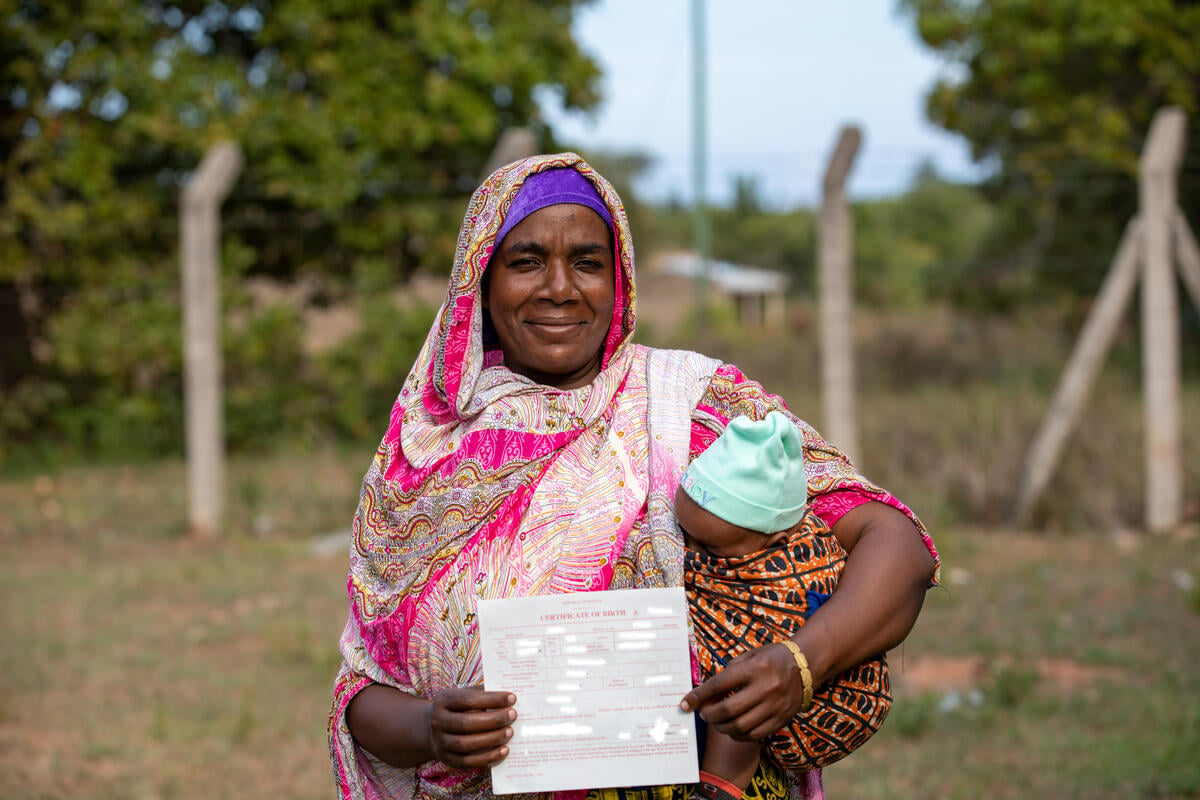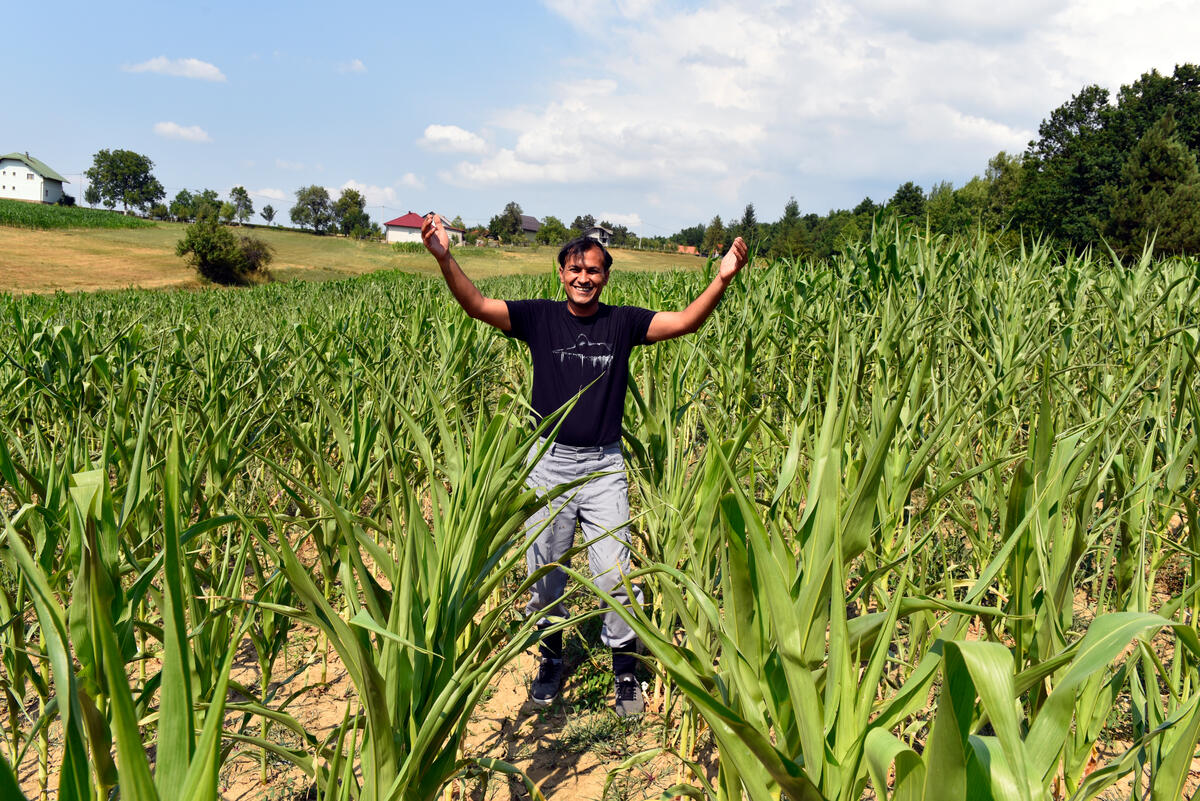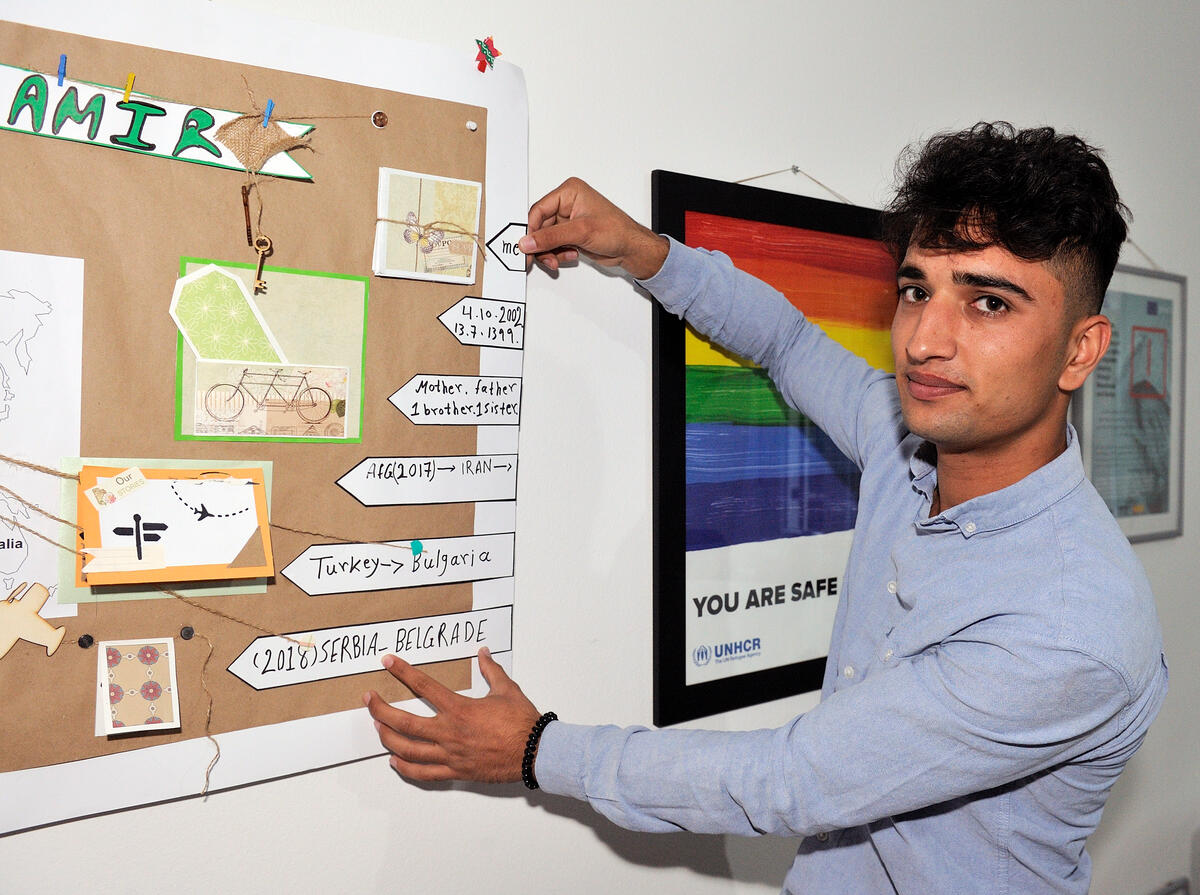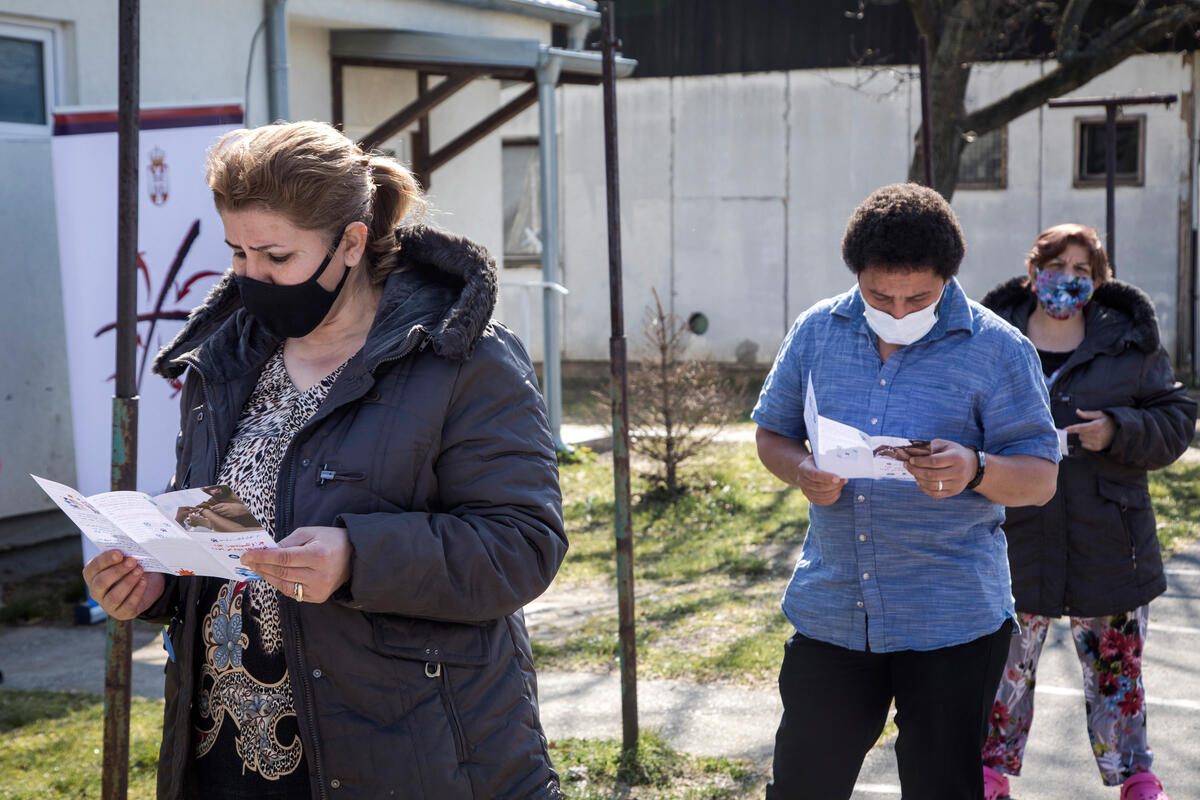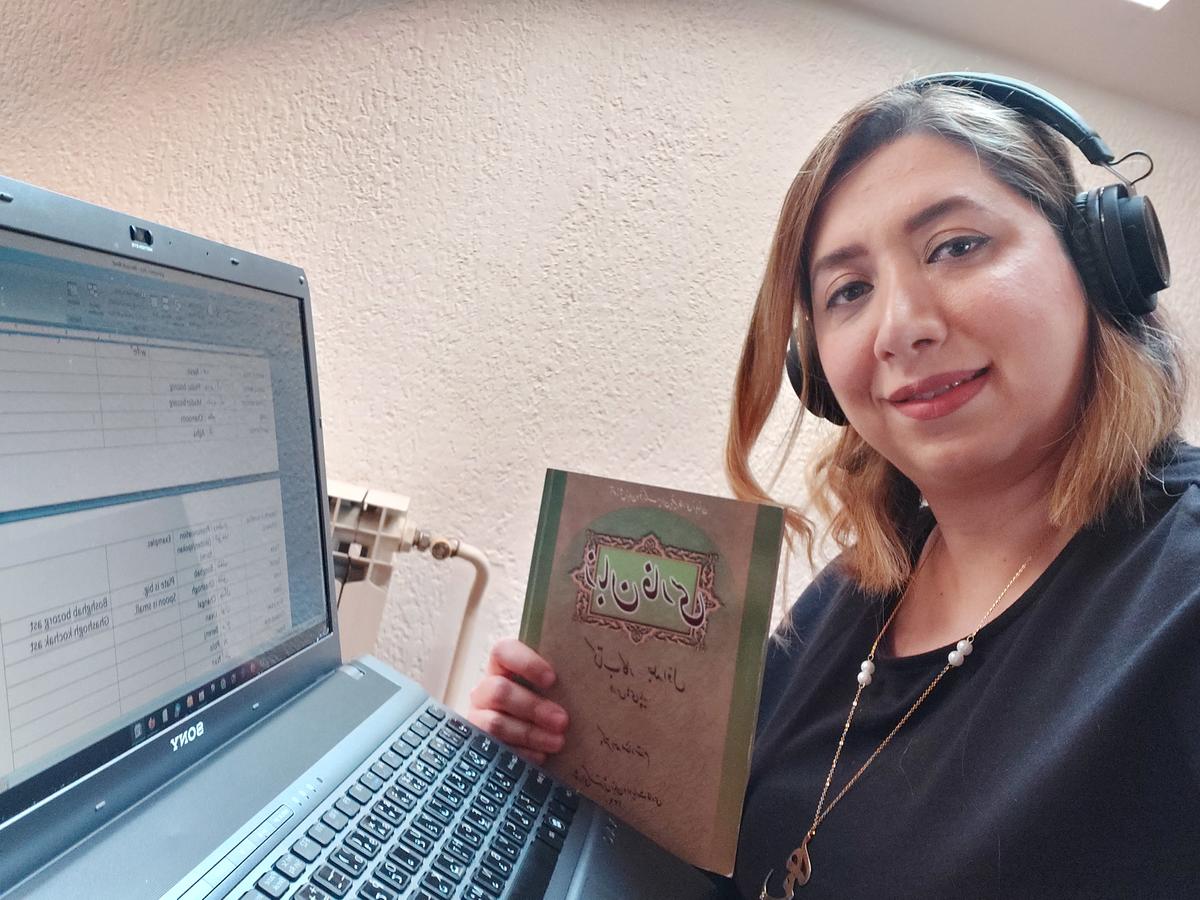Kosovo Crisis Update
Kosovo Crisis Update
Kosovo Session of ECOSOC
UNHCR's Special Envoy to the Kosovo region, Mr. Dennis McNamara, who is also the Deputy Special Representative of the Secretary-General for Humanitarian Affairs in Kosovo, addressed a special session of the Economic and Social Council in Geneva this morning devoted to Kosovo and humanitarian issues.
McNamara called the rapid return of more than 700,000 refugees to Kosovo an "unequivocal vote of confidence in the future of Kosovo." He urged a reinforced effort to deliver materials for shelter repair in the province, where an estimated 70,000 homes have been damaged or destroyed, and drew attention to the continuing need for food aid and for de-mining, as well as for assistance to mine victims. Most important, he said, is to stem the cycle of violence and revenge in Kosovo.
Funding
The U.N. will present to donor countries its revised consolidated appeal for humanitarian operations in south-eastern Europe (Albania, Bosnia and Herzegovina, Croatia, the Federal Republic of Yugoslavia (including Kosovo), and the former Yugoslav Republic of Macedonia) on Tuesday 27 July.
Funding of UNHCR's Kosovo operation has continued to improve. Following the announcement last week of a new $18 million contribution from Japan, two additional major contributions have been announced. On 21 July the United States announced that it was providing a further $50 million to UNHCR's Kosovo programme, of which $10 million for a special Kosovo Women's Initiative, while the European Commission pledged a further 30 million Euro ($31 million). This brings to $265 million the total of contributions to UNHCR's Kosovo emergency operation announced to date.
Kosovo
Shelter rehabilitation remains the most urgent need in Kosovo. The second phase of the UNHCR-coordinated "Rapid Village Assessment" will be released early next week, and will include around 500 villages, one-quarter of the total being assessed. UNHCR believes that up to 70,000 houses need some degree of reconstruction or repair throughout Kosovo.
In the meantime, UNHCR has been provided with a shelter damage assessment conducted by the U.S. National Imagery and Mapping Agency, which estimates that at least 67,000 buildings are heavily damaged. The images were taken at the end of June and show residential, community, commercial and industrial sites in Kosovo's 29 municipalities. The damage assessment is done by inspecting the photos of specific areas and counting damaged or destroyed roofs. The survey looked at 271,413 buildings and identified 25% or 67,326 as damaged. The actual level of destruction may be higher because some buildings have been destroyed by fire or shelling, but the roof remains intact.
The level of destruction observed from the air ranged from a high of 70% (in Srbica, where 5,370 out of 7,723 buildings were damaged) to virtually no destruction in Gora (just two out of 3,240 buildings damaged). Other areas with a high level of damage were Glogovac (51%), Vucitrn (49%), Klina and Istok (47%), Suva Reka (45%), Decani (43%), Mitrovica (37%) and Pec (35%).
Mines and UXO in Kosovo
The UN's Mine Action Coordination Centre is now operational in Pristina and serves as a focal point for the planning and coordination of mine/UXO (unexploded ordnance) related activities in Kosovo. A thorough survey is currently being conducted by the HALO Trust to assess the scope of the mine and UXO problem. It should be completed by mid-August.
According to WHO, mines and UXO caused up to 170 casualties in the first month since the refugee return started. 58% were caused by land mines, 40% by UXO and 2% by booby traps. Field reports indicate that mines, UXO and booby traps remain an obstacle to the safe return of refugees to their villages, and also hamper the deployment of UNMIK.
Ten mine action organizations are now operational in Kosovo, concentrating on de-mining and mine awareness work. Mine victim assistance is becoming increasingly important, as medical and rehabilitation facilities are needed to cope with the situation. In addition, locally trained de-miners will be required to meet the medium and long-term needs, as the number of trained de-miners who can be deployed from other operations is limited.
Mine accidents continue. On Wednesday one civilian was killed and two others injured by a mine blast in Stimlje. Another civilian was injured on Thursday when a mine exploded in a minefield which had previously been marked, but from which the markings had subsequently been removed.
Albania
UNHCR, the government of Albania and NATO's Albania force (AFOR) have moved into the second phase of their organized repatriation plan. Kosovars requesting assistance to return home during phase two will be moved by bus from their area of residence to Kukes and then to Kosovo. UNHCR has a bus fleet based in Durres for these movements. AFOR will provide escort for the buses and accompanying luggage trucks. Because of the declining numbers of repatriants, transportation by rail via Mjeda is no longer needed and has stopped.
The rapid, massive spontaneous return movements have abated, and the eight way-stations which provided support to more than a quarter of a million returning refugees will gradually be closed.
The organized repatriation began on 30 June and has transported more than 13,500 refugees back to Kosovo by train, bus and air.
Relief items from UNHCR's warehouses in Albania are now being ferried to Pristina by air on board a Belgian C-130. The Belgian airforce has offered UNHCR 28 flights of this large cargo plane. In addition, deliveries by the truck convoy co-ordinated by UK DFID continue, and a convoy of 11 water-tankers travelled on 20 July from Durres to Kosovo.
FYR of Macedonia
UNHCR continues to provide assistance to refugees staying in host families in the FYR of Macedonia, through the local Red Cross. A new UNHCR office in Kumanovo is already well-known to refugees in the surrounding villages.
In the Lojane area, it appears that most of the remaining refugees are ethnic Albanians whose homes are in Serbia proper, not in Kosovo. Most are undocumented and therefore cannot return home via the official Tabanovce crossing, as the Yugoslav authorities require possession of valid passports. UNHCR staff are looking into the issue of conditions for return to Serbia of ethnic Albanians and facilitation of readmission of those without documentation.
Bosnia and Herzegovina
To date, UNHCR staff estimate that nearly 8,000 of the Kosovars who sought refuge in Bosnia and Herzegovina have returned home. At peak there were nearly 22,000 Kosovar refugees in Bosnia and Herzegovina, of whom around half came after the start of NATO airstrikes in March 1999. The others fled into Bosnia over a period of around one year, following the outbreak of hostilities in Kosovo in March 1998.
Most of the Kosovars who have gone to Bosnia have been ethnic Albanians, but there are also quite a few Roma - currently estimated at around 1,000. 20% are estimated to have arrived in 1998, 50% shortly after the start of NATO airstrikes, and the remainder after the peace settlement. The latest arrivals claim to have fled reprisals from ethnic Albanian returnees. Most are living privately, some in camps or collective centres.
Returns from abroad
To date, more than 21,600 refugees have returned to Kosovo from outside the region. The largest single number, around 14,700, have returned from Turkey. Italy has informed UNHCR that voluntary returns of those Kosovars who were evacuated to Italy from the FYR of Macedonia have been completed, with the return of 3,800 persons. Other returns have been from Austria, Australia, Canada, Croatia, Germany, the Netherlands, Norway, Slovakia, Switzerland and the USA.
Europe: Asylum applications of FRY citizens
The number of asylum applications from citizens of the Federal Republic of Yugoslavia (mostly Kosovo Albanians) in Europe rose sharply in the second quarter of 1999, reflecting the crisis in Kosovo. During the period April-June there were 42,290 asylum applications filed by Yugoslavs in the 22 countries for which figures were available, or 60% more than in the first quarter. In June alone, 18,420 applications were filed, compared with 13,438 in May. Nearly half of the June applications were lodged in Switzerland (8,336), while 25% (4,811) were lodged in Germany.
During the first 6 months of 1999, one in three asylum applicants in Europe was a Yugoslav citizen. There were altogether 203,160 asylum applications (all nationalities) during this period.
Governments record asylum applicants by nationality, not by ethnicity, so there is no way of knowing exactly what proportion of the Yugoslav applicants are Kosovo Albanians, Serbs, Roma or others. Previously UNHCR estimated that at least 85% of the Yugoslav applicants were Kosovo Albanians.

